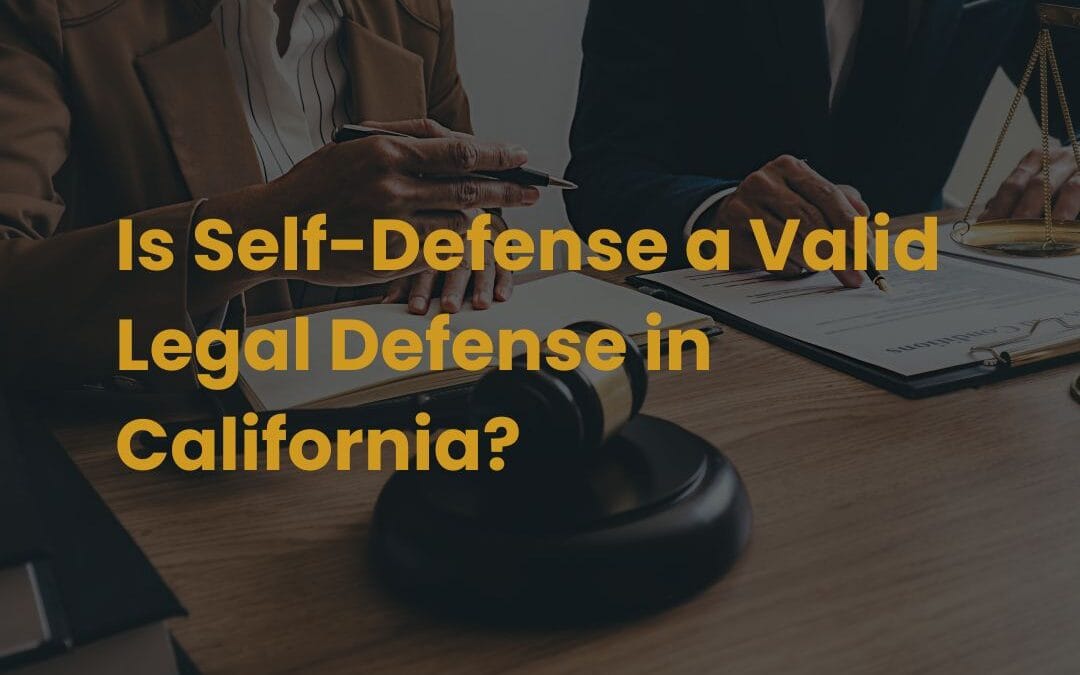When violence erupts unexpectedly, instinct takes over. You protect yourself, your loved ones, or your property—and sometimes, that moment of protection leads to criminal charges. Suddenly, the person who was defending themselves is being accused of assault, battery, or even homicide.
In California, however, self-defense is a valid and powerful legal defense—but only if the circumstances meet very specific legal standards. Understanding how this defense works can make all the difference between conviction and freedom.
At The Hallinan Law Firm, we’ve represented countless clients in San Francisco and throughout Northern California who acted out of fear, not aggression. Here’s what you need to know.
Page Contents
1. The Legal Foundation of Self-Defense in California
California law clearly recognizes a person’s right to defend themselves or others from imminent harm.
The key legal standards come from:
- California Penal Code §198.5 (Defense of home or property)
- California Jury Instruction CALCRIM No. 505 (Self-Defense or Defense of Another)
Together, these laws say that a person is justified in using reasonable force if:
- They reasonably believed they or someone else was in imminent danger of being harmed;
- They reasonably believed that using immediate force was necessary to prevent that harm; and
- They used no more force than was reasonably necessary under the circumstances.
If those three points are met, the act is legally considered self-defense, not a crime.
2. “Reasonable Belief” — The Heart of the Defense
The law doesn’t require that danger actually existed—only that the person reasonably believed it did.
That’s where experienced trial work comes in.
A skilled attorney can show that your fear was logical and that anyone in your position would have reacted the same way. For example:
- A person attacked in a parking garage doesn’t need to wait until they’re struck before defending themselves.
- A domestic violence survivor who fights back during a violent episode may still qualify for self-defense.
Reasonableness depends on context—location, body language, past threats, and timing all matter.
3. The “Imminent Danger” Requirement
Self-defense cannot be claimed for something that might happen later. The threat must be immediate and unavoidable.
⚖️ Example:
If someone threatens, “I’ll get you tomorrow,” and you respond with force that same day, that’s not imminent danger. But if someone lunges at you with a weapon, the threat is immediate, and your right to defend yourself activates.
4. The Limits of Force: When Self-Defense Becomes Excessive
Even if you were justified in using force, using too much force can destroy your defense.
You can only respond with proportional force to stop the threat—no more.
For instance:
- If someone shoves you, responding with deadly force may not be justified.
- But if you’re attacked with a knife, defending yourself with lethal force may be reasonable.
Courts closely examine proportionality. This is why having a defense attorney who understands how to frame the narrative of your fear is crucial.
5. What About “Stand Your Ground” in California?
California is not a traditional “Stand Your Ground” state like Florida—but the laws here still protect those who defend themselves.
You are not required to retreat if you are in a place where you have a legal right to be and you face imminent danger.
In other words, you don’t have to run—you can legally stand your ground and defend yourself if threatened.
6. The Castle Doctrine: Defending Your Home
California’s Castle Doctrine (Penal Code §198.5) gives strong protection to homeowners who use force against intruders.
If someone unlawfully enters your home, the law presumes you had a reasonable fear of danger, and force—even deadly force—may be justified.
However, this protection applies only inside your residence, not in your yard, driveway, or public spaces.
7. Common Myths About Self-Defense
🚫 “If I hit back first, it’s not self-defense.”
➡️ Not always true. If you had a reasonable fear of being attacked, you can still claim self-defense even if you struck first.
🚫 “You can always fight back if you’re angry.”
➡️ No. Self-defense is about fear of harm, not anger or revenge.
🚫 “If no weapon was involved, it’s not self-defense.”
➡️ False. Even unarmed attacks—punches, chokeholds, or cornering someone—can justify defensive action.
8. Building a Self-Defense Case
When The Hallinan Law Firm takes a self-defense case, we move fast to:
- Investigate witness statements and surveillance footage.
- Highlight injuries or threats that show you were under real danger.
- Cross-examine the prosecution’s narrative to expose inconsistencies.
- Present expert testimony on human reaction, fear, and timing.
Every case tells a story—and we make sure your story is the one the jury truly understands.
9. Why Choose The Hallinan Law Firm
Neil Hallinan, a third-generation trial attorney and former public defender, has handled over 45 jury trials and defended thousands of clients across Northern California. His deep courtroom experience means he knows exactly how prosecutors think—and how to dismantle their arguments.
When you claim self-defense, you need more than just a lawyer—you need a fighter who understands fear, timing, and the split-second decisions real people make when their lives are at risk.
10. Take Action: Protect Yourself the Right Way
If you or a loved one has been arrested for assault, battery, or homicide in California and you acted in self-defense, don’t wait to “explain later.”
Every hour matters.
📞 Call The Hallinan Law Firm today at 415-837-3449
📧 Email: Contact@HallinanLawFirm.com
🌐 Visit: www.HallinanLawFirm.com

